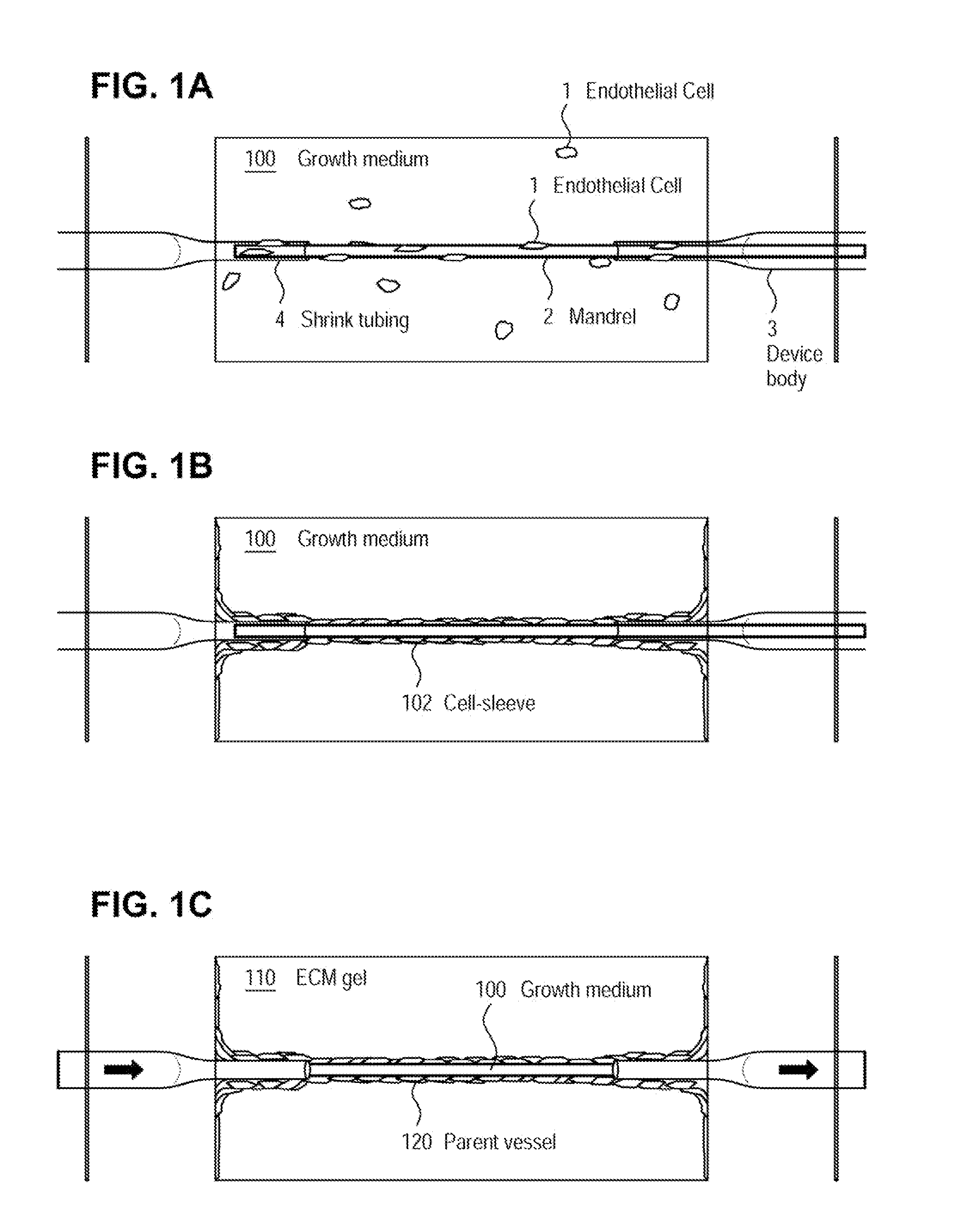Method for Creating Perfusable Microvessel Systems
a microvessel and microvascular technology, applied in the field of physiological and pathological vascular growth and vascular growth, can solve the problems of ischemic wound healing, poor understanding of the cellular mechanisms that mediate and regulate angiogenic growth and morphogenesis, and inability to carry out vascular growth. to achieve the effect of increasing the survival time of capillary tubes in vitro
- Summary
- Abstract
- Description
- Claims
- Application Information
AI Technical Summary
Benefits of technology
Problems solved by technology
Method used
Image
Examples
Embodiment Construction
[0035]The examples presented herein are for the purpose of furthering an understanding of the invention. The examples are illustrative and the invention is not limited to the example embodiments. The method of the present invention is useful for the study of physiological and pathological vascular growth, and vascular growth in response to angiogenic or angiostatic factors. Other useful applications are to methods that evaluate the angiogenic potential of cancer tissues and the response to antiangiogenic drugs. Additionally, the method of the invention may be used to construct various wound-healing devices and for vascularization of tissue-engineered constructs.
[0036]In one example a method and device for the creation of perfusable three-dimensional microvessel networks is disclosed. As used herein “EC” refers to endothelial cells, “SMC” refers to smooth muscle cells and “CAS” refers to coronary-artery substitutes.
[0037]Generally, the devices for the culture and perfusion of microve...
PUM
 Login to View More
Login to View More Abstract
Description
Claims
Application Information
 Login to View More
Login to View More - R&D
- Intellectual Property
- Life Sciences
- Materials
- Tech Scout
- Unparalleled Data Quality
- Higher Quality Content
- 60% Fewer Hallucinations
Browse by: Latest US Patents, China's latest patents, Technical Efficacy Thesaurus, Application Domain, Technology Topic, Popular Technical Reports.
© 2025 PatSnap. All rights reserved.Legal|Privacy policy|Modern Slavery Act Transparency Statement|Sitemap|About US| Contact US: help@patsnap.com



